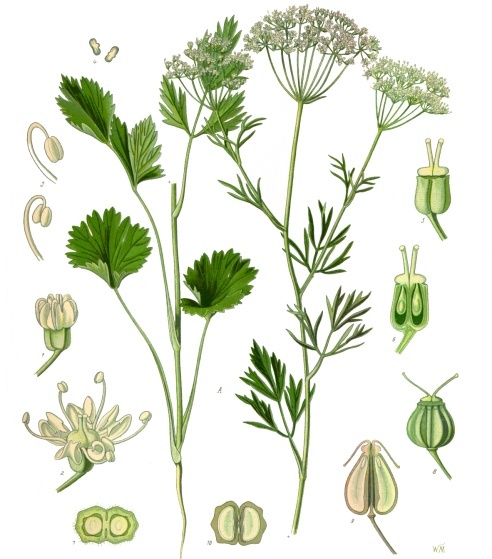Introduction
Anise (Pimpinella anisum) is a flowering plant in the family Apiaceae, native to the eastern Mediterranean region and southwest Asia. Anise grows to 20–50 cm (8–20 in) tall, with opposite leaves 3–5 cm (1–2 in) long and 2–3 cm (0⁄79–1⁄8 in) broad. The flowers are white or yellow, 3–5 mm (0.12–0.20 in) in diameter, and produced in clusters. The fruit is an oblong, dark brown schizocarp 4–10 mm (0.16–0.39 in) long containing several seeds; when dried it is a dull grey-green colored fruit known as an “aniseed”. Anise is used as a spice, either whole or ground, for cooking and baking, and to make licorice-flavored candy and liqueurs such as absinthe and ouzo. Anise essential oil is also used in soaps, detergents, lotions, and perfumes. Anise has health benefits including its ability to aid digestion, reduce colic in infants, flatulence, and stomach gas relief. Anise

Essentials

Soil
Anise is a hardy plant that can grow in a variety of soil types, but it prefers a well-drained, sandy loam. Anise does not tolerate wet or heavy soils. If you are planting anise in a pot, use a light, airy potting mix. An all-purpose potting mix will work fine as long as it is well-drained. Anise prefers full sun but will tolerate some partial shade. Anise seeds can be sown directly in the garden after the last frost date. Anise plants will reach maturity in approximately 90 days. Anise can be harvested throughout the growing season. To dry anise for long-term storage, cut the stems when the plant is in bloom and hang them upside down in a dark, dry place. Anise can be used fresh or dried in a variety of dishes. It is commonly used to flavor desserts, baked goods, and savory dishes.
Watering
Anise plants need to be watered regularly, especially during dry periods. When watering, be sure to soaking the ground around the base of the plant thoroughly so that the roots can absorb moisture easily. Anise will tolerates some drought once established, but it will not produce as much fruit if it does not receive enough water. Too much water can also be detrimental to anise plants, so be sure not to overdo it!
Flowering
Anise plants grow to be about 2-3 feet tall and have white or pale pink flowers. Anise can be grown from seed or transplanted from a nursery. Anise prefers full sun and well-drained soil. Anise is typically harvested in the fall after the flowers have bloomed and the seeds have ripened.
Fruiting
The Anise plant produces fruit that is brown and has a ridged surface. The Anise fruit is about 1 inch in diameter and has a star-shaped cross-section. The Anise fruit contains seeds that are used to flavor food. The Anise plant is grown for its fruit, which is used to flavor food. Anise can be used fresh, dried, or ground. Anise is used to flavor food such as cookies, cakes, and bread. Anise is also used to make liqueurs such as anisette and ouzo.
Propagation
Anise can be propagated by seed or by division. Anise plants prefer full sun and well-drained soil. Anise seeds should be sown in late spring or early summer. Anise plants can also be divided in early spring. Anise plants are generally easy to grow and are relatively pest and disease-free.
Pests and diseases
Anise is also used to make absinthe, an alcoholic beverage. Anise plants can be affected by pests such as aphids, earwigs, and mites. Diseases that can affect anise plants include powdery mildew, root rot, and rust. Anise plants are also susceptible to damage from snowstorms and strong winds.
Irritation to pets
Anise can also be irritating to pets. If ingested, Anise can cause vomiting, diarrhea, and abdominal pain in dogs and cats. Anise oil is particularly dangerous and can cause seizures and respiratory problems. For this reason, it is important to keep Anise plants out of reach of pets. If you suspect your pet has ingested Anise, please contact your veterinarian immediately.

